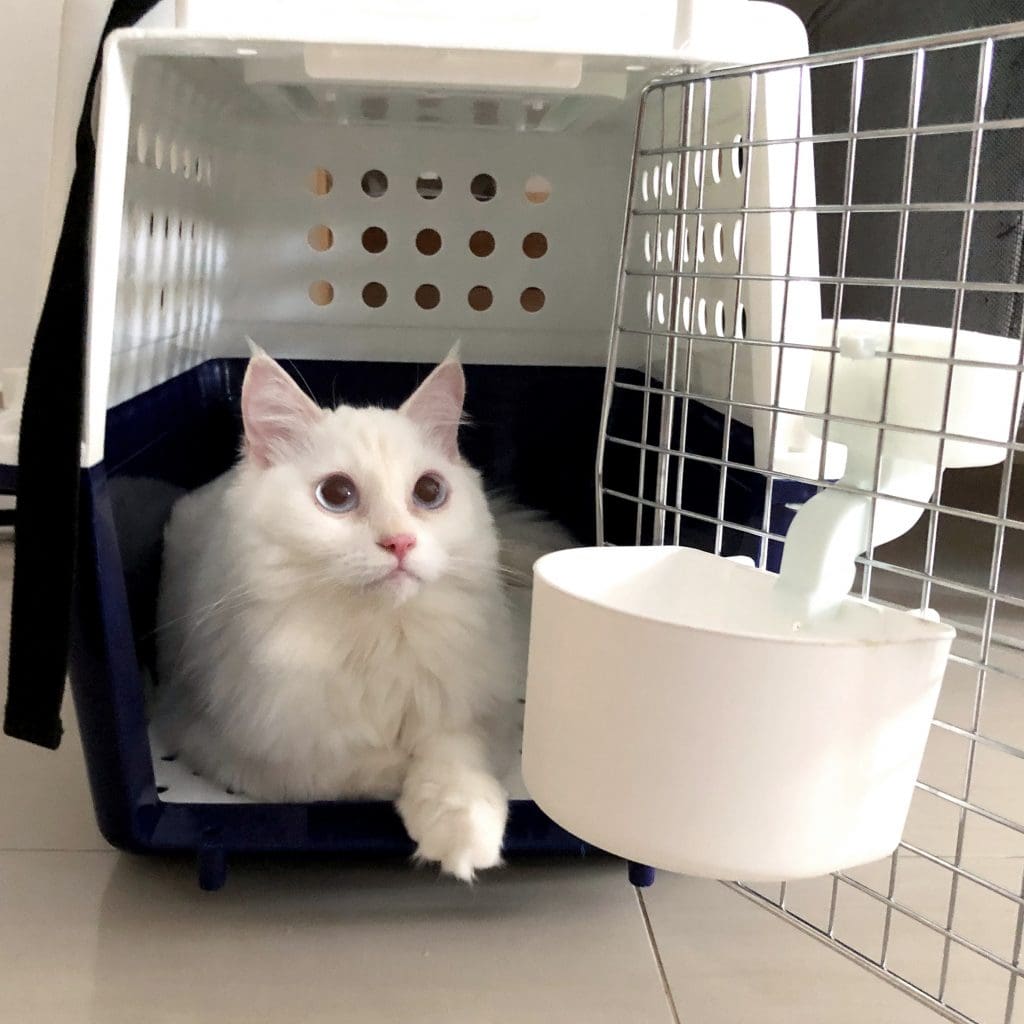
Debbie Winkler, a certified animal behavior consultant, is co founder of Humane Domain, an Education and Training website that provides a variety of pet tips, classes and events, and resources. Here she provides some good, sensible advice for those with kitties who may be carrier adverse.
Is your cat Carrier Crazy?
By Deb Winkler
I had a client who thought she had lost her cat just before the blizzard. Good news-the cat only hid for a couple of days behind clothes on a shelf in her walk-in closet. The cat spooked because she was trying to get him into a carrier to go to the vet for vaccinations and he was not happy. In fact her cat also scratched her as he was fighting her attempts to place him in the carrier. Aside from the possibility of the cat being lost, I have people contact the office routinely with very similar stories.
There is a way to prevent this from occurring and to change the cat’s perception of the carrier.
I prefer the top loading carriers personally and long before using it I recommend that people find a place where they are comfortable having the carrier permanently where it is always accessible to the cat. Then leave it open and put something very cushy and lush in there to encourage the cat to choose that as one of the places to snooze. I also recommend putting a special treat in the carrier, like freeze dried salmon, a couple of times a week for the life of the cat. We want to create a desire in the cat to spend time being comfortable in the carrier, as well as checking it out frequently for good stuff.
If you have a cat that just panics when you get the carrier the easiest way to remedy that is to re-home that carrier and get another one. If it was front loading get a top loading carrier. If it was hard plastic one, get a soft carrier. Make that a great place to nap. Remember that behavior modification is about changing perception.
About Debbie Winkler
Debbie Winkler CABC, CPDT-KA has been providing behavior consultations & training for many domestic & exotic species, from dogs to dolphins for more than 25 years. She was on the education committee of the APDT helping to create the first national certification for professional dog trainers known as the CPDT & is both past vice president and president of the International Association of Animal Behavior Consultants.
Debbie has served on many rescue and shelter boards including the Baltimore Humane Society and Baltimore Vicious Dog Hearing Board. She has volunteered to train assistance dogs and animal assisted therapy animals. Learning American Sign Language, Debbie has lobbied for assistance dogs to have the same public access rights as guide dogs.